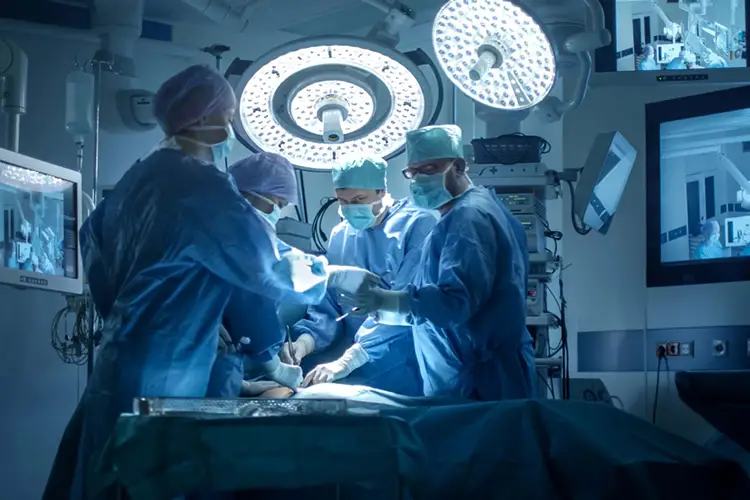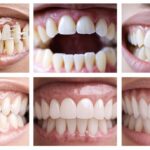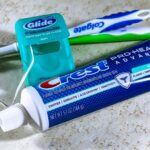Correcting Malocclusion with Jaw Surgery
Malocclusion — or, misalignment of the jaw — is a relatively common medical condition in the United States. Overbites and underbites affect millions of Americans, in some cases so severely as to cause other dental and medical issues. Jaw surgery cost and the fear of surgery are major stumbling blocks.
There Are Three Types of Malocclusion:
- Class 1 occlusion is where there is some slight overlap of the upper and lower teeth. While considered the least problematic, patients can still experience TMJ problems with a Class I bite.
- Class 2 malocclusion is where the lower jaw is too far behind the upper jaw, and most of these patients have overbites and small chins.
- Class 3 malocclusion is where the lower jaw is too far in front of the upper jaw, and these patients have underbites and large chins.
The possibility of jaw surgery most often arises in cases of Class 2 and Class 3 malocclusions.
“When malocclusion issues cannot be corrected by braces alone, surgery is another option,” Dr. Sam Muslin explains.
“Orthognathic or jaw surgery is a procedure that can be very complex depending upon the severity of the malocclusion and the cause behind it.”
Orthognathic surgery is not inherently a bad option for correcting an overbite or underbite. But it is far from the only option — and is often associated with costs that patients may not be aware of and doctors may not mention.
Taken at face value, jaw surgery is a cheaper alternative to non-surgical means of correcting a misaligned jaw. But what about all the hidden costs? Before committing to jaw surgery, you should make sure you have all of the information you need to make the right decision. In this post we walk you through the true cost of jaw surgery — including recovery time, the need for braces, the risk factors and more.
A Breakdown of the Financial Cost of Jaw Surgery
Cost Helper provides a great breakdown of the typical cost of jaw surgery. While the out-of-pocket cost will vary depending on your insurance coverage and surgeon, you can get a general sense of the financial cost of jaw surgery here:
- For patients not covered by insurance, the average cost of orthognathic surgery is between $20,000–$40,000, although some people have reported paying up to $200,000 without insurance.
- This cost typically includes consultations, the surgery itself, and follow-up care.
- Even with insurance, some patients may need to pay up to $5,000 out of pocket.
- Other areas included in this cost breakdown include x-rays and anesthesia during surgery.
- What may not be included in this breakdown are related but not direct costs, such as your stay in the hospital for a few days after the surgery or the medication that may be required to handle the pain.
- Braces are often required before and after jaw surgery and can cost a few thousand dollars for traditional braces and up to $8,000 or more for Invisalign.
“Beyond orthodontics, other factors that can sway the cost include the severity of the jaw misalignment and what type of surgery is required,” Carol Wiley at Colgate writes. “Your location, the hospital treating you and complications during care can all make a difference as well.”
Hidden Costs of Jaw Surgery: Recovery Time and Risks
Typically, jaw surgery involves one of two procedures: cutting the bone in the upper jawbone to move it back or forward or cutting the lower jawbone to readjust the lower teeth and chin. Either way, the procedure involves quite a bit of preparation and recovery in order to have a chance of a successful outcome.
While generally safe, orthognathic surgery (as any surgery) has risks. Mayo Clinic lists these to include the following:
- Blood loss.
- Nerve injury.
- Jaw fracture.
- A relapse of the jaw to its original position.
- The possibility of the bite fit still being off post-surgery, and the need for additional surgery.
- Loss of part of the jaw.
And because of the complexity of jaw surgery the recovery time is longer too. The dental surgery clinic recommends taking at least two weeks off post-jaw surgery — with potentially even longer recovery times for TMJ correction.
Medisetter, an online guide for medical procedures, extends that recovery time to six weeks, with at least a few days in the hospital for double jaw surgery. And surgical clinic OMFS backs up this timeline, recommending that patients eat only soft foods for a period of six weeks.
Time is not the only factor in recovery. There is also the possibility of complications post-surgery. A WebMD article reviewed by Dr. Michael Friedman warns to look for infection, fever, swelling or breathing problems and notes the importance of post-surgery follow-up appointments, which can be another drain on your time during surgery recovery. Still, other complications may include pain, bruising, jaw stiffness, and numbness, registered dental hygienist Donna M. Rounsaville at Colgate adds.

Remember: Jaw Surgery Does Not Negate the Need for Braces
We mentioned above that a hidden cost of jaw surgery is the additional funds needed for braces. In many cases, braces are required before jaw surgery — and in some cases may be required for a time after surgery.
Again, this is not simply a matter of financial cost but also the cost of time. Patients may need to wait a couple of years before jaw surgery while the braces do their work, and may need to continue wearing braces for a couple of years after surgery.
Even with braces, the procedure may not always work. Many of Dr. Muslin’s patients seek out his treatment because correction with braces or surgery did not work. The time involved with braces and recovery is often a factor in patients seeking out an alternative. “We see patients of all ages that do not want the jaw surgery and get our treatment to avoid it,” Dr. Muslin says.
The Alternative to Jaw Surgery: Face Lift Dentistry®
Taking the hidden financial and time costs of jaw surgery into consideration, it may be worth considering a non-surgical alternative. Dr. Sam Muslin’s VENLAY® Bite Restoration with JawTrac® Jaw Alignment, for example, address all of the same bite issues as jaw surgery.
Because the treatment is non-surgical, patients already avoid many of the risks associated with jaw surgery — such as relapse or nerve damage. There are a number of other benefits to taking this non-invasive route for bite correction. These include:
- The treatment results are highly predictable.
- There is no associated pain.
- The treatment is non-surgical, which means there is no need to cut or break the jaw.
- The treatment is non-invasive, which means it requires no drilling or grinding.
- There is no need for appliances.
- There is no need for veneers.
- The entire process takes around three weeks.
Because the bite restoration finds the best, natural position for your jaw, the treatment is about your health and your smile. On the whole, the cost of the VENLAY® Bite Restoration treatment is the same or less than orthognathic surgery.
Images: petunyia/©123RF Stock Photo, antonioguillem/©123RF Stock Photo, wavebreakmediamicro/©123RF Stock Photo









